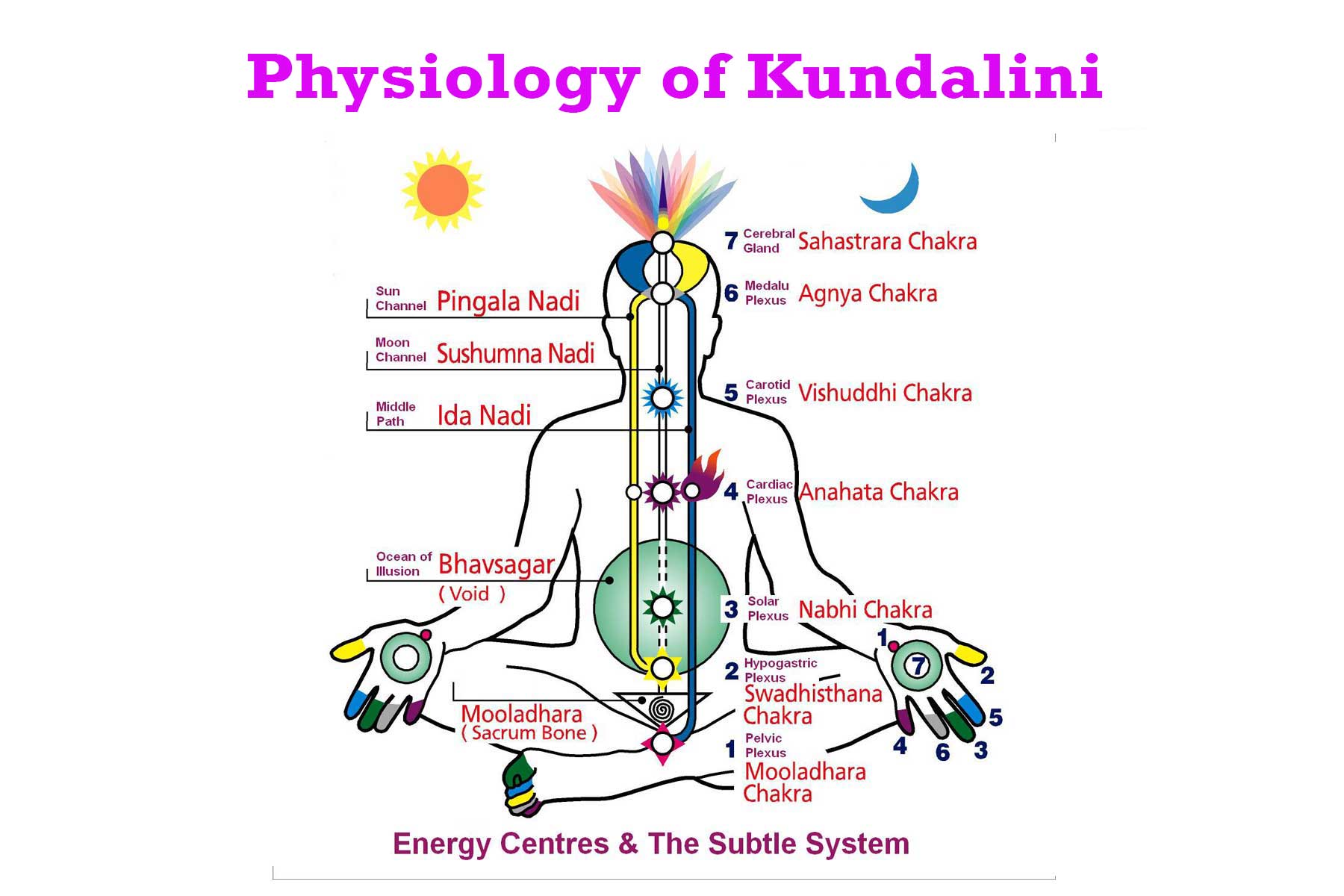The Physiology of Kundalini
19 Apr 2022 HYN Himalayan Yoga Academy

Talking about the Physiology of Kundalini, Kundalini energy does not belong to the physical, astral, and mental body and consequently, it cannot be found there. The serpent power belongs to a still higher plane, that is, the causal plane, which is above the concept of object, time, and space. It connects the lowest unconsciousness seat of power at the root center( mooladhara) to the highest center of consciousness at the crown center ( Sahasrara). Illumination takes place when Kundalini shakti( kinetic form of energy) rises to and meets Lord Shiva (a potential form of energy) . It passes through the central nerve Sushumna, which is the physic passage within the spinal column. From the root enter at the base of the spine to the crown center on top of the head there are seven centers of energy called chakras, through which the Kundalini passes. With the passage of Kundalini through the centers of energy, the transformation and transcendence of personality in the aspirant takes place. The most important is the sixth center, called Ajna chakra, also known as the ‘ Third Eye’ and it is the center of command or intuitive knowledge. The Ajna center is internally connected with both the root center and the crown center.
In the words of Swami Satyananda Saraswati:
The serpent power is considered to arise from the unconscious state in mooladhara. This unconscious awareness of man then has to pass through different phases and becomes one with cosmic awareness in the highest realm of existence. The supreme awareness of Shiva is considered to be seated in Sahasrara, the super-conscious or transcendental body at the crown of the head. In the Vedas, as well as the Tantras, this supreme seat is called Hiranyagarbha, the womb of consciousness. It corresponds to the pituitary body, the master gland situated within the brain. For a Kundalini Yogi, the supreme consciousness represents the highest possible manifestation of physical matter in the body. This psychic, supra sensory or transcendental power in man is the ultimate point of human evolution.
A chakra is a vortex of psychic energy which can be visualized as circular movement energy at a particular rate of vibration. Physiologically, chakras are like junctions where the nerves meet, and they are situated on the interior walls of the spinal column. They are like poles of electricity through which electrical wires ( nerves ) run across to supply power at different centers. Through the nerves (Nadis) , prana( vital energy) flows forward and backward.
Kundalini and Chakras :
The first of the chakras is called Muladhara ( root center) which is situated at the pelvic floor and it corresponds to the coccygeal plexus of the nerves. It is at the chakras that consciousness rises above animal nature. Below these chakras, there are supposed to be lower centers of energy going down to the heels, responsible for developing the animal and human qualities of instinct and intellect. The Mooladhara chakra controls the excretory and sexual functions in the body.
The second chakra, called swadistham, lies at the terminal point of the spinal column. It relates to the sacral plexus of nerves and takes care of the unconsciousness in the person.
The third chakra, called Manipura, lies in the spine just at the navel. It is related to the solar plexus and takes care of the digestive, assimilative, and temperature-controlling systems of the body.
The fourth chakra, called Anahata, lies in the vertebral column at the back of the heart near the base and it is at the level of the depression in the sternum. It is related to the cardiac plexus of nerves and takes care of the organs of the body in this region, such as the heart, lungs, diaphragm, etc.
The fifth center, called vishudhhi, is situated in the vertebral column at the level of the throat pit. It is related to the cervical plexus of nerves and takes care of the thyroid complex, upper plate, epiglottis, etc.
The sixth chakra, called ajna, is related to the pineal gland and is situated above the spinal column in the midline of the brain. It is the center of the command and takes care of all the functions of one`s life. In particular, it controls the sexual activity in a person.
Between the sixth and seventh chakra, there is an additional chakra, called Bindu ( point), situated at the top back of the head, where the Hindus normally leave a tuft of hair. It takes care of the optic system and is the center wherefrom Amrit ( nectar) emanates on awakening and is responsible for the rejenuvation of the whole body system. It is internally connected to the vishuddhi chakra and two centers are believed to be activated simultaneously.
The seventh chakra, called Sahasrara, lies at the top of the head and is related to the pituitary gland which is supposed to take care of all the glands and systems of the terminal point of the journey of Kundalini shakti.
